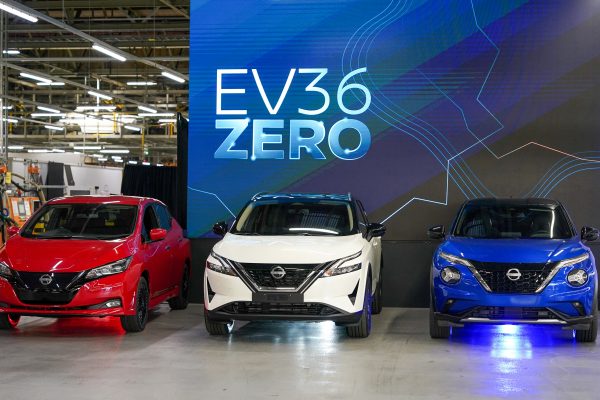There are a number of reasons behind the turn to state intervention in developed economies. Most notable among them, the fragmenting geopolitical environment has led governments to be suspicious of openness to international trade. The political failure in countries like the United States and Australia of first-best, price-based policies to address carbon emissions has also encouraged the adoption of second-best industrial policies to boost the supply of, and demand for, technologies that will be crucial to reducing carbon emissions and achieving net zero goals. In addition, a pronounced and widening inequality in developed countries has been blamed on de-industrialisation, and the solution offered has been new incentives to revive the manufacturing sector and create jobs.
In middle income countries, there is burgeoning confidence about their role in the global economy and experiments in industrial policy have gained new prominence. In Indonesia, President Joko Widodo and his key allies paint their ‘downstreaming’ policy, based upon bans of the export of ‘critical minerals’, as a model of industrialisation for other resource-rich countries. As India tries to turn Prime Minister Narendra Modi’s ‘Make in India’ campaign from slogan into policy, the appeal of import substitution industrialisation, as opposed to integration into global production chains, is growing.
Government planning and coordination, and the judicious use of support for industries with organic growth potential, can be a sound intervention that need not distort fair play between nations within the framework of rules-based trade. As we have highlighted in these pages recently, the trouble comes when governments seek to take shortcuts to industrialisation that push back against, rather than abet, shifts in markets and the development of comparative advantage among countries.
In developing countries especially, the costs of industrial policy need to be weighed up carefully. Every dollar spent on trying to grab a share of a nascent industry, let alone seeking to steal market share from an entrenched player, is one that is lost from public investment — from transport and communications infrastructure to human-capital enhancing improvements to education and health systems — that would facilitate inflows of capital into the industries in which private investors perceive a particular country having a competitive edge.
These issues are canvassed in the latest edition of the East Asia Forum Quarterly (EAFQ), now on its way to subscribers and available for download via ANU Press.
This issue of EAFQ examines what the new enthusiasm for industrial policy activism means for the global system as well as for economies in Asia. How will industrial policy affect the ability of emerging economies in Asia to break into global value chains in manufacturing? Do measures to encourage domestic processing of raw materials help diversify production, or do they undermine the stable policy environment needed to underwrite green industrialisation?
The Quarterly explores the experience of industrial policy in major economies in the region, like the United States, China, Indonesia and India, as well as the likely impact of new industrial policies in semiconductor manufacturing, renewable energy and electric vehicles. It also takes a global view of industrial policy, looking at the effects on smaller economies in the region, what’s good and what’s bad industrial policy, and how it might affect the international system of trading rules.
In the Asian Review section, we ask what Asia needs to consider as it devises ways of governing the rise of artificial intelligence, what the impact of COVID-19 has been on human capital, and whether BRICS can really offer an alternative model of global governance in a new age of geopolitical fragmentation.
The explosion of industrial policy in the developed world poses major challenges for the global system, which was set up under the assumption that discriminatory industrial policy would fade away, at least in the developed world, and that the World Trade Organization (WTO) would discipline distortionary industrial policies. The long-term implications of the return of large-scale subsidies as a policy tool in the North Atlantic are hard to predict, but, given the paralysis in the WTO, tit-for-tat protectionism and retaliation risk splintering the global economy even further than it has been by US–China rivalry and the war in Ukraine.
As Mary Lovely observes in this week’s lead article, ‘America’s trading partners in Asia wonder what Washington’s new embrace of industrial policy means for their own development’.
‘With deep government pockets, a large domestic market and potent research and development capabilities, the United States has the economic power to capture a significant share of global investment in targeted industrial sectors. The US turn towards protectionism and its desire to shift trade to ‘like-minded’ friends raise fears that the US market will be closed to Asian exports unless US demands for common standards and supply chain configurations are met’.
Another concern for Asian suppliers is about US demands to reduce Chinese involvement in supply chains. The US CHIPS Act’s investment tax credits are framed in a way that seeks to limit links to manufacturing facilities in China.
Political support for shoring up the global trading system, a critical lynchpin for East Asian industrialisation in past decades, will only erode further if home-grown industries are seen losing out unfairly to overseas competitors that have been ‘picked as winners’ by governments in the United States and other industrial countries. Even in these apparently unpropitious international circumstances, Asia’s export-led growth model still has life in it and offers critical lessons for developing countries about why it is important for them to avoid slavishly mimicking the shift to import substituting industrial policies in the established industrial economies.
The EAF Editorial Board is located in the Crawford School of Public Policy, College of Asia and the Pacific, The Australian National University.

